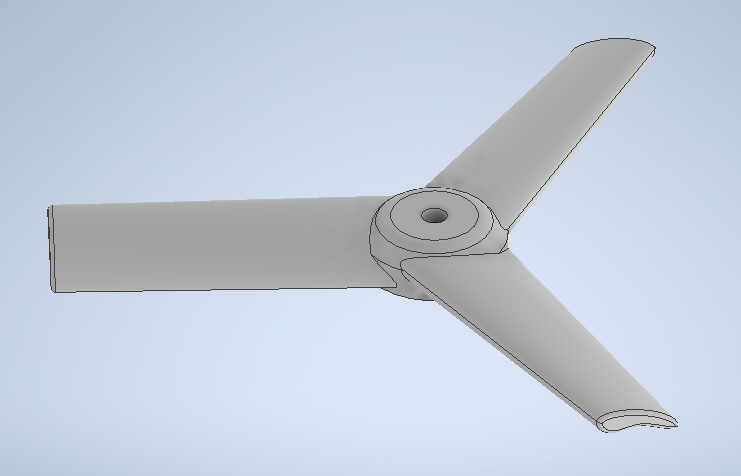

Figure 1: Granta MPI
I calculated the required MPI formula for giving me the best Strength to Cost ratio that would fit within my given constraints. Using this calculated formula I them plotted it in Granta-Edupack to determine the most suitable materials for my wind turbine blades [1]. By using a weighted matrix and the top choices from Granta my team and I determined that bamboo was the best material for our scenario since it is cheap, strong, and easily available.

Figure 2: Stress simulation being run on turbine blade
Using Autodesk Inventor’s analysis suite I ran simulations [2] on different turbine blades to determine the required thickness of bamboo required given a maximum and minimum tip displacement window.

Figure 3: Wind turbine blade design

Figure 4: Side profile of the blade
I used Autodesk Inventor to design a working wind turbine blade with a varied wing pitch, to both increase efficiency and decrease load stress on the blade which in turn won me a bonus in this course.
Short clip of the blade being printed
Short clip of the blade being printed
After designing the rotor I used a slicer to convert the model into instructions that could be understood by a 3D printer. I then printed it on a Prusa printer in PLA.

Figure 5: 3D printed turbine